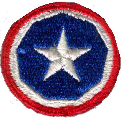 |
 |
 |
 |
 |
 |
 |
 |
 |
 |
 |
 |
 |
 |
 |
 |
 |
 |
 |
|
|
Historical Section |
|
|
 |
|
|
|
|
|
 |
|
|
|
|
|
|
|
|
In this section, we will attempt to discuss the deployment of US Army troops to the delta region of Korat, Thailand. In response to the increasing counter-insurgency on the northern borders of Thailand, The Royal Thai Government requested assistance from the United States. The United States was also concerned about the security of the northern Thai borders and along the Mekong River Delta area. The NVA and Chicoms were using this area of the Ho Chi Minh trail to infiltrate insurgents through Laos and Thailand to the southern and central areas of South Vietnam. |
|
|
|
At the Secretary of Defense Conference held in Honolulu, Hawaii on 22 March 1962, The Secretary of Defense (SecDef) and the Joint Chiefs of Staff (JCS) were in agreement that ground troops were needed in Thailand to counter the insurgency in northern Thailand and support the operations in Laos and along the Mekong Delta. Plans were developed for temporary deployment of troops and equipment. The SecDef directed also that the communications system in Thailand be activated as proposed to connect Udorn, Thailand and Okinawa by 31 March 1962, and connections from Ubon, Thailand to Pleiku, Bangkok and Saigon be established by 1 September 1962. The SecDef said he would authorize a US Army Radio Relay Company (approx 350 men) for a period of up to one year. The Department of Defense was waiting for the go ahead from the US State Department before they could proceed. The THANAT-RUSK Communique of 1962 broke the ice . |
|
|
|
In conjunction with SEATO Exercise Air Cobra, the Joint Task Force 116 was deployed from Okinawa to Thailand in early 1962. The US Task Force included a US Marine Battalion Landing Team (BLT), the 1st Battle Group, 27th Infantry (25th Infantry Division) and supporting elements under a detachment of the 9th Logistical Command, which also included elements of the 1st Aviation Company (Caribou), 31st MED Field Hospital and the 999th Signal Company. As the logistical support element of JTF 116, the 9th Logistical Command was also to provide assistance in civil construction projects. When the Task Force was deactivated in December 1962, the 9th Logistical Command remained in Thailand with the mission of storing and maintaining prepositioned stocks, conducting people-to-people civic action programs and maintaining the in-country communication base. |
|
|
|
In the meantime, several US Army units had been deployed to Thailand on a permanent basis. By November 1966, the US Army Support Command, Thailand was established. These Army units fulfilled direct or indirect support functions related to the Vietnam conflict to the extent that most received Vietnam service credits in recognition of their support role. The 9th Logistical Command was inactivated in Thailand on 12 June 1970. |
|
|
 |
 |
|
|
|
 |
|
|
|
Return to Index |
|
|
|

